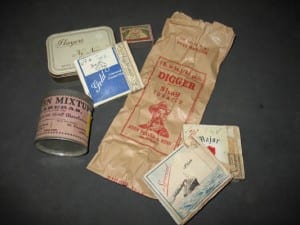Pandora’s Boxes
By Rachael Sparks, on 7 June 2011
Field archaeologists are experts in recycling – give us a random selection of old bits of string, nails, cardboard or whatever and we’ll transform them into some terribly useful bit of kit that costs next to nothing. Or failing that, a spectacular costume for the end-of-dig fancy dress party. My personal highlight was the year I morphed into Princess Leia, accompanied by R2D2 (the dig vacuum cleaner with a few judicious additions. I had to make the noises myself).
But the most common and recognisable piece of recycling would have to be the small finds boxes. Objects come in all shapes and sizes, so there is always a scramble in field work to find the perfect container to keep that bone pin from breaking as it makes its route from registrar to photographer to illustrator. Then comes the moment when objects need to be shipped abroad, and another scramble is on to find packing materials to keep everything safe in transit.
In an ideal world, all this temporary packaging would be thrown away once the objects reach their destination, to be replaced with suitable conservation grade materials. But lack of funding, staff and time means that the reality is sometimes very different. When I first started work on the Institute of Archaeology Collections we had a lot of skeletons in our closet, including drawers full of objects still in their original excavation wrappings.
The material from ancient Jericho is a case in point. Kathleen Kenyon excavated there in the 1950s, and made good use of whatever came to hand, including containers brought out from England with her dig team. From which we can conclude that a lot of smoking, eating and bandaging wounds went on in the field. When those options ran out, diggers would make do with locally sourced materials. Fragile and small objects were routinely stored in an eclectic range of boxes, padded on the inside with cotton wool or pieces of toilet paper, now yellowing with age. Cigarette boxes were particularly popular, and came with a range of exciting bilingual mottos inside the lid, no doubt doubly useful for those working on their Arabic. Then of course there were the brown paper packages tied up with string…
Back in the collection, our approach is to think about the long term implications of storage. This means goodbye to the charismatic ad-hoc boxes, full of charm but now rusting and breaking at the seams, and hello to a range of neutral materials – clear crystal boxes that let you view the contents, fitted out with foam mounts specially cut to the shape of the object; acid free tissue paper in place of the bathroom variety, and polycord rings that give a round based pot a cushioned support in place of the old metal stands that were once in favour.
I haven’t abandoned the old packaging, however, and a sample is kept as a flavour of archaeology past. Some of this has gone on to become artefacts themselves – and so our old odds and sods have served as inspiration to artists in residence at the Institute, and taken centre stage as exhibits in their own right.
Addendum
And by popular demand – fancy dress dig parties of the past.
- Leslie Starkey as the bishop, resisting temptation (in the form of his wife Madge)
4 Responses to “Pandora’s Boxes”
- 1
-
2
Mark Carnall wrote on 10 June 2011:

In zoology I often find biscuit tins and ammunition boxes.
In the past ammunition boxes are particularly practical because the more ammo you use to shoot animals the more room you have to store them.
- 4
 Close
Close







That’s *really* cool!
Unwrapping original excavation packaging must make you feel like you’re there? Do they have that exciting atmospheric ‘scent’ that’s hard to describe to anyone who doesn’t know what you’re talking about?!
Any chance we can see some photos of the ‘end-of-dig fancy dress parties’?! I think we would all be better off having done so!!